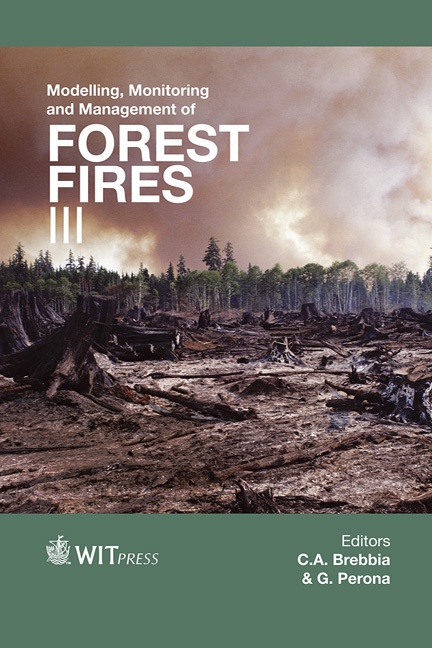Fire Risk At The Wildland-urban Interface: A Case Study Of A Galician County
Price
Free (open access)
Transaction
Volume
158
Pages
12
Page Range
177 - 188
Published
2012
Size
2,963 kb
Paper DOI
10.2495/FIVA120151
Copyright
WIT Press
Author(s)
M. L. Chas-Amil, E. García-Martínez & J. Touza
Abstract
In Galicia (Spain), wildfires are one of the main environmental problems, with an annual average of close to 8,600 forest fires between 1999 and 2008. Most of these fires are intentionally ignited. It is therefore crucial for fire prevention policies to assess human-started fires and their relationship with socioeconomic aspects. In this paper we focus on the spatial pattern of human presence in the territory as an important determinant on forest fires ignitions. We identify, classified and map wildland-urban interface (WUI) and assess fire risk by types of WUI in a Galician county with one of the highest incidence of forest fires during the studied period (1999-2008). Following Lampin-Maillet et al. (Mapping wildland-urban interfaces at large scales integrating housing density and vegetation aggregation for fire prevention in the South of France. Journal of Environmental Management 2010) approach, and based on a combination of a map of buildings, obtained from the National Topographic Base, and the SIOSE land-cover map (Information system of land use cover in Spain) we distinguished among 12 types of interfaces. Our results show a significant relationship between the different types of WUI and the spatial patterns of wildfire ignition points. The highest density of fire ignition points was found in non-forest WUI with either dispersed or very dense clustered buildings. Keywords: wildland-urban interface, forest fires risk, spatial analysis, Galicia. 1 Introduction In Spain, wildfires are a recurrent phenomenon, with an annual average of 15,000 forest fires and 173,000 ha burned between 1980 and 2010 [3]. A
Keywords
wildland-urban interface, forest fires risk, spatial analysis, Galicia.





